
Winter Care Tips for Pine Trees: Keeping Your Pines Healthy and Thriving
As winter approaches, it’s crucial to provide proper care for your pine trees to ensure they remain healthy and vibrant throughout the colder months. Pine trees are resilient but can still face challenges during winter, including frost damage, dehydration, and pest issues. In this comprehensive guide, we’ll explore essential tips and techniques to help you care for pine trees in winter and maintain their beauty and vitality.
Pine trees require special care during the winter to ensure their health and vitality. One important aspect of winter care for pine trees is protecting them from harsh weather conditions. Heavy snow, ice, and strong winds can cause damage to the branches and foliage of pine trees. It’s important to shake off any excess snow from the branches to prevent breakage and to wrap the tree in burlap or a protective covering to shield it from the elements.
Another crucial aspect of winter care for pine trees is providing proper nourishment. This includes watering the trees regularly, especially during dry winter months when the ground can become frozen and dehydrated. Applying a layer of mulch around the base of the tree can also help retain moisture and protect the roots from freezing temperatures.
In addition to protection and nourishment, it’s important to monitor the health of your pine trees during the winter. Keep an eye out for signs of disease or pest infestations, as these issues can become more prevalent during the colder months. Regularly inspect the branches and foliage for any abnormalities and address any issues promptly to prevent further damage.
By following these winter care tips, you can help your pine trees stay healthy and thriving throughout the winter season, ensuring their beauty and vitality for years to come.
Table of Contents
ToggleUnderstanding Pine Trees
is important for their proper care, especially during the winter months. One crucial aspect of winter care for pine trees is providing proper nourishment. This includes watering the trees regularly, especially during dry winter months when the ground can become frozen and dehydrated. Applying a layer of mulch around the base of the tree can also help retain moisture and protect the roots from freezing temperatures.
In addition to protection and nourishment, it’s important to monitor the health of your pine trees during the winter. Keep an eye out for signs of disease or pest infestations, as these issues can become more prevalent during the colder months. Regularly inspect the branches and foliage for any abnormalities and address any issues promptly to prevent further damage.
By following these winter care tips, you can help your pine trees stay healthy and thriving throughout the winter season, ensuring their beauty and vitality for years to come. Understanding the specific needs of pine trees and providing proper care during the winter months will help them to thrive and continue to enhance your landscape.
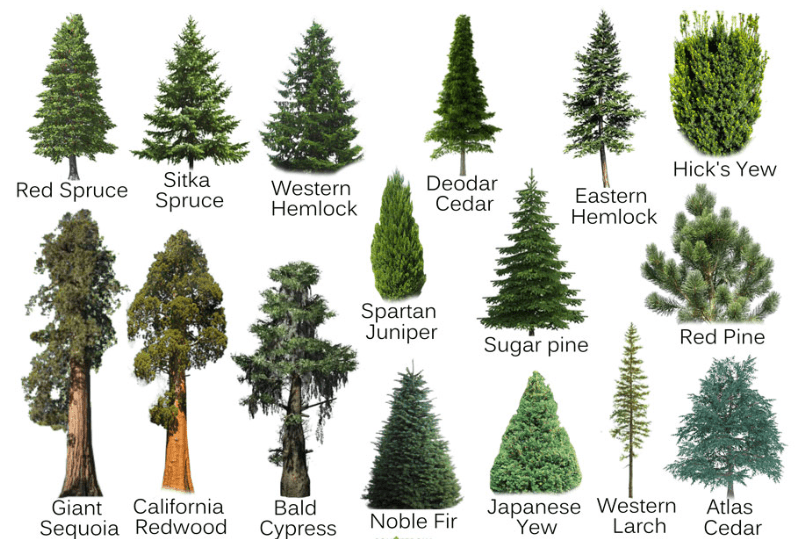
Description of common pine tree species.
Pine trees are a popular and common type of evergreen tree found in many parts of the world. There are several different species of pine trees, each with its own unique characteristics. Some common types of pine trees include the Eastern White Pine, the Scots Pine, and the Ponderosa Pine, among others. These trees are known for their long, needle-like leaves and their ability to thrive in a variety of climates and soil conditions. They are also valued for their wood, which is often used in construction and woodworking. When caring for pine trees, it’s important to provide them with the proper protection and nourishment, especially during the winter months. This includes shaking off excess snow, wrapping the tree in protective covering, watering regularly, and monitoring for signs of disease or pests. By taking these steps, you can help your pine trees stay healthy and vibrant throughout the winter season.
Characteristics that make pine trees resilient in winter.
Pine trees have several characteristics that make them resilient in winter. One of the key features is their needle-like leaves, which are designed to withstand the harsh winter conditions. These leaves have a waxy coating that helps to retain moisture and protect the tree from freezing temperatures. The shape of their leaves also helps to reduce water loss, allowing the tree to survive in cold and dry conditions.
Additionally, pine trees have a strong root system that allows them to absorb water and nutrients from the soil, even in winter. This helps to keep the tree healthy and resilient during the colder months. The dense and sturdy branches of pine trees also provide protection from heavy snow and ice, preventing breakage and damage to the tree.
Pine trees are also well-adapted to survive in various soil conditions, making them resilient in different environments. Their ability to thrive in both cold and warm climates makes them a popular choice for landscaping and forestry.
Overall, the combination of their needle-like leaves, strong root system, and adaptable nature makes pine trees well-equipped to withstand the challenges of winter and continue to thrive throughout the season.
Why pine trees are popular in landscaping.
One reason why pine trees are popular in landscaping is because of their hardiness and resilience. Pine trees are able to survive in various climates and soil conditions, making them a versatile and adaptable choice for landscaping. Their needle-like leaves have a waxy coating that helps retain moisture and protect the tree from freezing temperatures, allowing them to thrive in cold and dry conditions. Additionally, the shape of their leaves helps reduce water loss, making them well-suited for withstanding harsh winter conditions. The strong root system of pine trees enables them to absorb water and nutrients from the soil, even in winter, which helps keep the tree healthy and resilient. The dense and sturdy branches of pine trees provide protection from heavy snow and ice, preventing breakage and damage to the tree. Overall, the combination of their resilience, adaptability, and ability to thrive in different environments makes pine trees a popular and practical choice for landscaping.
Preparing Pine Trees for Winter
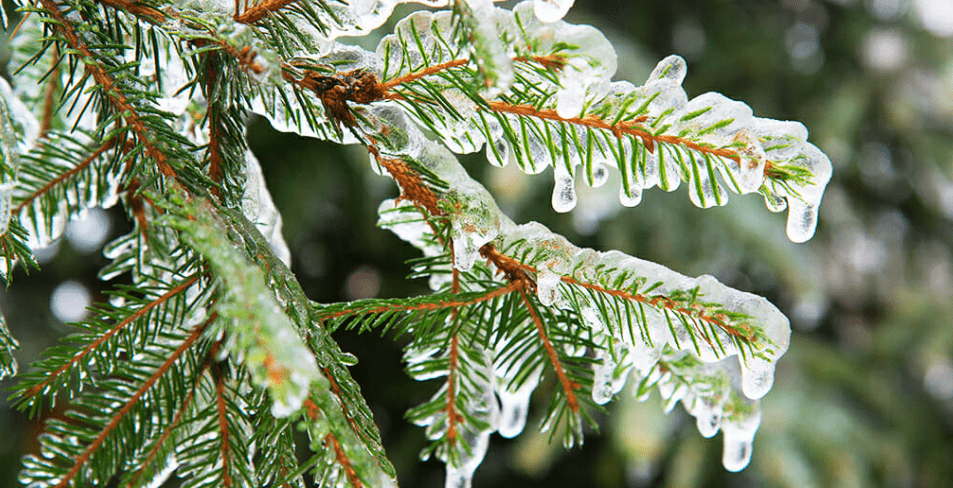
Best practices for winterizing pine trees.
As winter approaches, it’s important to take steps to prepare your pine trees for the colder weather. One of the best practices for winterizing pine trees is to water them thoroughly before the ground freezes. This will help ensure that the trees have enough moisture to sustain them through the winter months. Additionally, applying a layer of mulch around the base of the tree can help insulate the soil and protect the roots from freezing temperatures. It’s also a good idea to prune any dead or damaged branches to prevent them from becoming a safety hazard during winter storms. Finally, consider wrapping the lower trunk of the tree with burlap or tree wrap to protect it from harsh winter winds and sunscald. Following these best practices for winterizing pine trees can help ensure that they remain healthy and resilient throughout the winter season.
Pruning techniques to remove damaged or weak branches.
When it comes to pruning pine trees, it’s important to focus on removing damaged or weak branches. This not only improves the overall health and appearance of the tree, but also reduces the risk of branches breaking and causing potential harm. Start by identifying any branches that appear dead, diseased, or weakened. Use sharp, clean pruning shears to carefully remove these branches at the point where they join the main stem. It’s important to make clean cuts to promote healing and minimize the risk of disease entering the tree. Additionally, thinning out overcrowded areas can improve air circulation and sunlight exposure, leading to healthier growth. When pruning, be mindful of the tree’s natural shape and avoid removing too much green foliage. By employing proper pruning techniques, you can help your pine trees thrive and remain strong throughout the seasons.
Mulching around the base for insulation.
One important aspect of caring for pine trees is to provide insulation around the base of the tree through mulching. Mulching helps to regulate soil temperature, retain moisture, and suppress weed growth. When mulching around the base of your pine tree, be sure to use organic materials such as wood chips, straw, or pine needles. Apply a layer of mulch about 2-4 inches thick, making sure to leave a small gap between the mulch and the trunk to prevent rot. This insulation will help protect the roots from extreme temperatures and maintain a healthy environment for the tree to grow. Additionally, mulching can improve the overall appearance of your landscaping and reduce the need for frequent watering. By incorporating mulching into your pine tree care routine, you can promote optimal growth and vitality for your trees.
Winter Watering
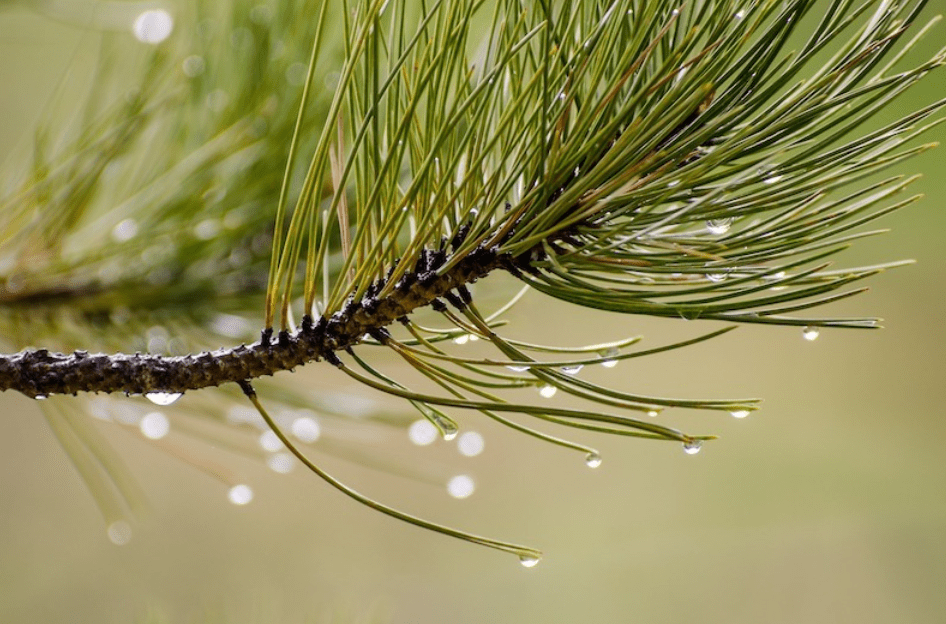
Importance of watering pine trees adequately before winter.
It is crucial to water pine trees adequately before winter to ensure their survival and health during the cold months. Pine trees continue to lose moisture through their needles in the winter, and if the ground is frozen, they cannot replenish this moisture from the soil. This can lead to winter burn and damage to the tree. To prevent this, it is important to water your pine trees thoroughly in the fall before the ground freezes. This will help the trees to store enough moisture to survive the winter months. Ensure that the soil is well-drained and the water is able to penetrate deeply into the root system. Proper watering is essential for the overall health and vitality of your pine trees, especially before the onset of winter.
Signs of dehydration in pine trees during winter.
It’s important to keep an eye out for signs of dehydration in pine trees during the winter months. Signs of dehydration include wilted or discolored needles, and the tree may appear to be dry and brittle. If you notice these signs, it’s important to take action to rehydrate the tree. This can be done by carefully watering the tree, making sure to thoroughly saturate the soil around the root system. Mulching can also help to retain moisture in the soil and protect the tree’s roots from freezing temperatures. By taking these steps, you can help to ensure the health and vitality of your pine trees during the winter months.
How to properly water pine trees in colder months.
In colder months, it’s important to properly water pine trees to ensure their health and vitality. To do this, make sure the soil around the tree is well-drained so that water can penetrate deeply into the root system. Proper watering is essential, especially before the onset of winter. Signs of dehydration in pine trees during winter include wilted or discolored needles, as well as the tree appearing dry and brittle. If you notice these signs, it’s important to take action to rehydrate the tree. Carefully water the tree, making sure to thoroughly saturate the soil around the root system. Additionally, mulching can help retain moisture in the soil and protect the tree’s roots from freezing temperatures. By taking these steps, you can help ensure the health and vitality of your pine trees during the winter months.
Protection from Harsh Conditions
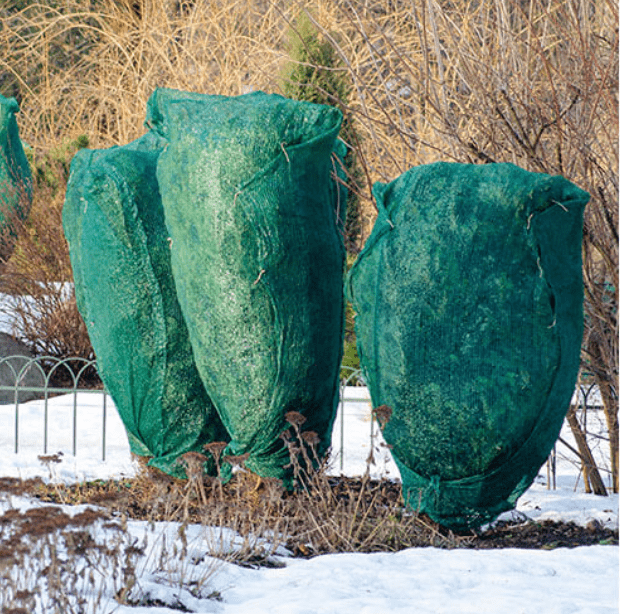
Shielding pine trees from winter winds.
Shielding pine trees from winter winds is important to protect their health and vitality. To do this, it is important to make sure the soil around the tree is well-drained so that water can penetrate deeply into the root system. Proper watering is essential, especially before the onset of winter. Signs of dehydration in pine trees during winter include wilted or discolored needles, as well as the tree appearing dry and brittle. If you notice these signs, it’s important to take action to rehydrate the tree. Carefully water the tree, making sure to thoroughly saturate the soil around the root system. Additionally, mulching can help retain moisture in the soil and protect the tree’s roots from freezing temperatures. By taking these steps, you can help ensure the health and vitality of your pine trees during the winter months. It’s important to provide protection from harsh conditions to ensure the well-being of your pine trees.
Using burlap or tree wraps to prevent frost damage.
In order to prevent frost damage, it is important to take steps to protect your trees, especially during the winter months. One method of protection is to use burlap or tree wraps. These materials can provide a barrier against freezing temperatures and harsh winter conditions. To effectively use burlap or tree wraps, it is important to ensure that the soil around the tree is well-drained, allowing water to penetrate deeply into the root system. Proper watering is also essential, especially before the onset of winter. Signs of dehydration in pine trees during winter include wilted or discolored needles, as well as the tree appearing dry and brittle. If you notice these signs, it’s important to take action to rehydrate the tree by carefully watering and thoroughly saturating the soil around the root system. Additionally, mulching can help retain moisture in the soil and protect the tree’s roots from freezing temperatures. By taking these steps and using burlap or tree wraps, you can help ensure the health and vitality of your pine trees during the winter months and protect them from frost damage.
Implementing snow barriers to minimize breakage.
One effective method of protecting trees from snow and winter conditions is to implement snow barriers. Snow barriers can help minimize breakage and damage to trees from heavy snow and ice. One way to do this is by using burlap or tree wraps to create a barrier around the trees. These materials can provide a protective layer against freezing temperatures and harsh winter weather. It’s important to ensure that the soil around the tree is well-drained, allowing water to penetrate deeply into the root system. Proper watering before the onset of winter is also essential to prevent dehydration in trees. Signs of dehydration in pine trees during winter include wilted or discolored needles, as well as the tree appearing dry and brittle. If you notice these signs, it’s important to rehydrate the tree by carefully watering and thoroughly saturating the soil around the root system. In addition, mulching can help retain moisture in the soil and protect the tree’s roots from freezing temperatures. By taking these steps and using snow barriers, you can help protect your trees from winter damage and ensure their health and vitality.
Monitoring Tree Health
Monitoring Tree Health is crucial for maintaining the overall well-being of your trees. One way to monitor tree health is by paying attention to the leaves and branches. Look for any signs of discoloration, wilting, or unusual spots on the leaves, as well as any dead or decaying branches. This can be an indication of disease or pest infestation. Another way to monitor tree health is by inspecting the trunk for any signs of damage, such as cracks or splits. It’s also important to check the soil around the tree for proper drainage, as waterlogged soil can lead to root rot and other issues. By regularly monitoring your trees and taking proactive measures to address any issues, you can help ensure the long-term health and vitality of your trees.
Winter Pruning Techniques
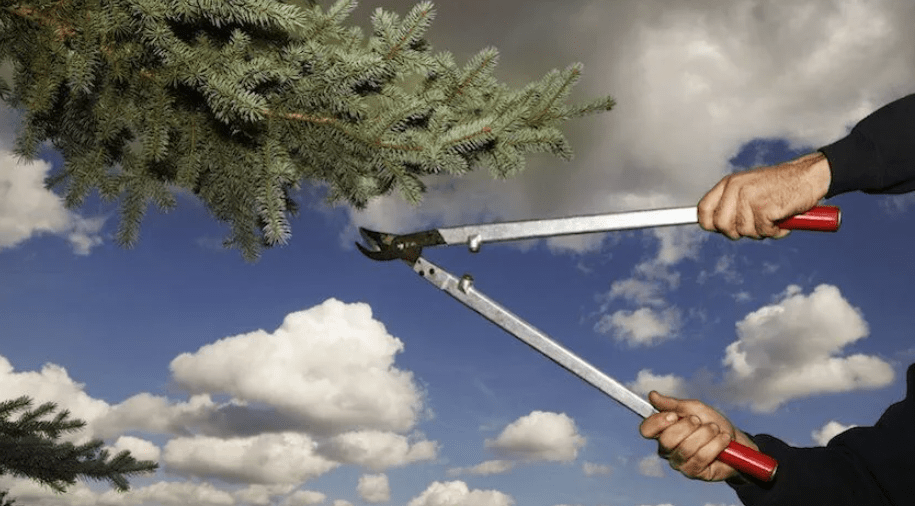
Winter Pruning Techniques are essential for maintaining the health and shape of your trees during the colder months. When pruning in the winter, it is important to remove any dead or diseased branches to prevent the spread of disease and promote new growth in the spring. It is also important to prune for structure and to maintain the overall shape of the tree. When pruning, be sure to make clean cuts and avoid cutting too close to the trunk or leaving stubs, as this can cause damage to the tree. Additionally, be mindful of the weather conditions when pruning in the winter, as extreme cold can cause additional stress to the tree. Overall, winter pruning is a crucial part of tree care and can help promote the health and vitality of your trees.
In conclusion, taking care of your pine trees during the winter is crucial to ensuring their health and longevity. By following the tips and techniques outlined in this article, you can protect your pine trees from harsh weather conditions and provide them with the nourishment they need to thrive. Remember to check for any signs of damage or disease and take proactive measures to address any issues that may arise. With proper care, your pine trees will continue to bring beauty and life to your landscape for years to come.
Frequently asked questions And Answer
It’s important to water your pine trees regularly, especially during dry periods in the winter. Make sure the soil is moist but not waterlogged.
It’s best to prune your pine trees in late winter or early spring before new growth begins. This will help promote healthy growth and shape the tree.
If heavy snow or ice accumulates on your pine trees, gently shake the branches to remove the excess weight. You can also use a broom to brush off the snow, being careful not to damage the branches.
It’s best to avoid fertilizing your pine trees in the winter, as they are dormant during this time. Wait until early spring to apply a slow-release fertilizer to promote healthy growth.
To prevent winter damage, make sure your pine trees are well-watered, properly pruned, and protected from heavy snow and ice. Mulching around the base of the tree can also help insulate the roots and protect them from extreme cold.
Pine trees can be susceptible to certain diseases and pests in the winter, such as pine wilt disease and pine bark beetles. Keep an eye out for any signs of damage or distress and consult a professional if you have concerns.
It’s best to wait until early spring to transplant or plant new pine trees, as they may have a harder time establishing themselves in the colder weather.
In addition to regular watering, pruning, and protection from the elements, it’s important to monitor the overall health of your pine trees and address any issues promptly. Consulting with a professional arborist can also provide valuable guidance for winter care.
